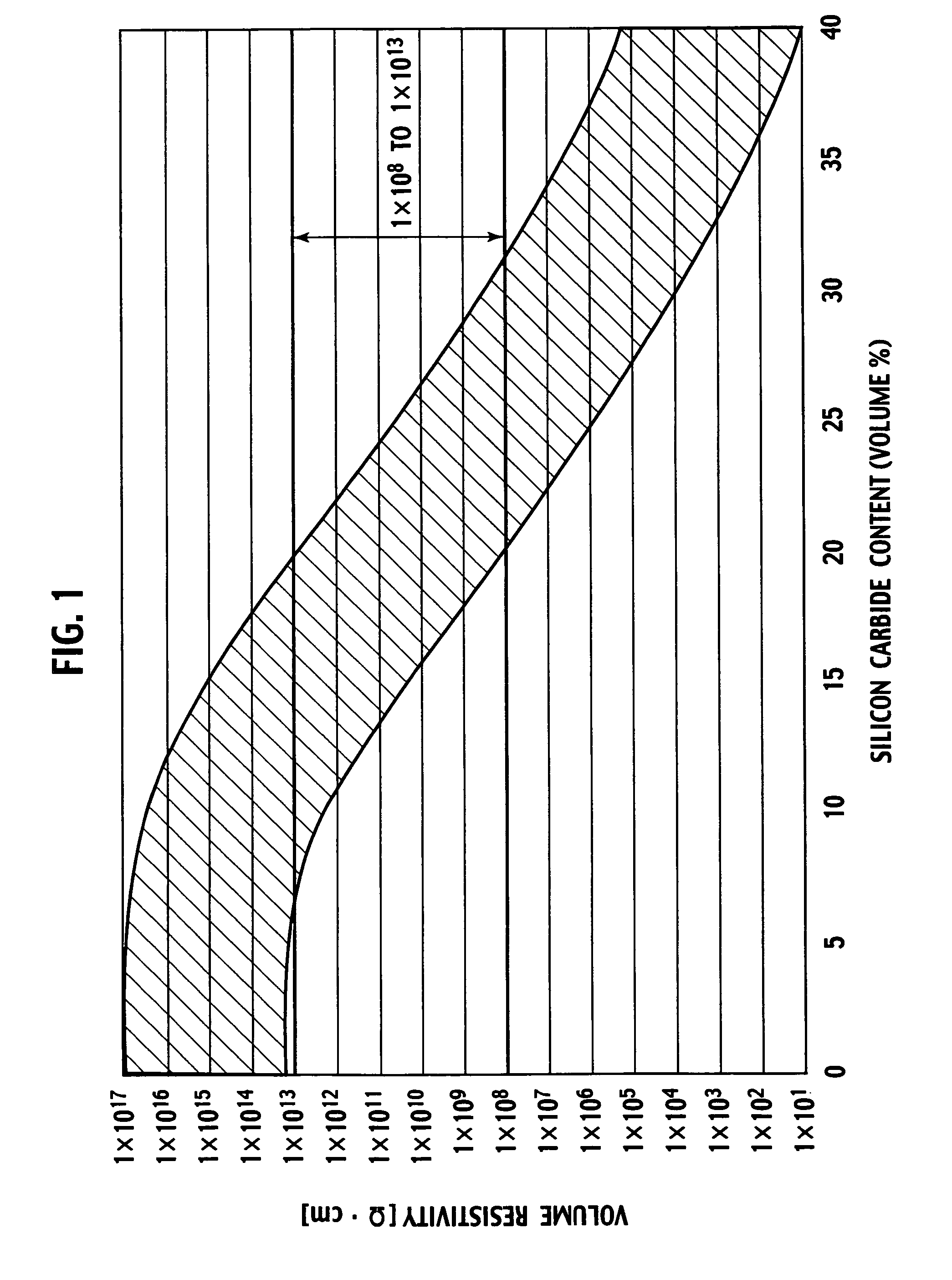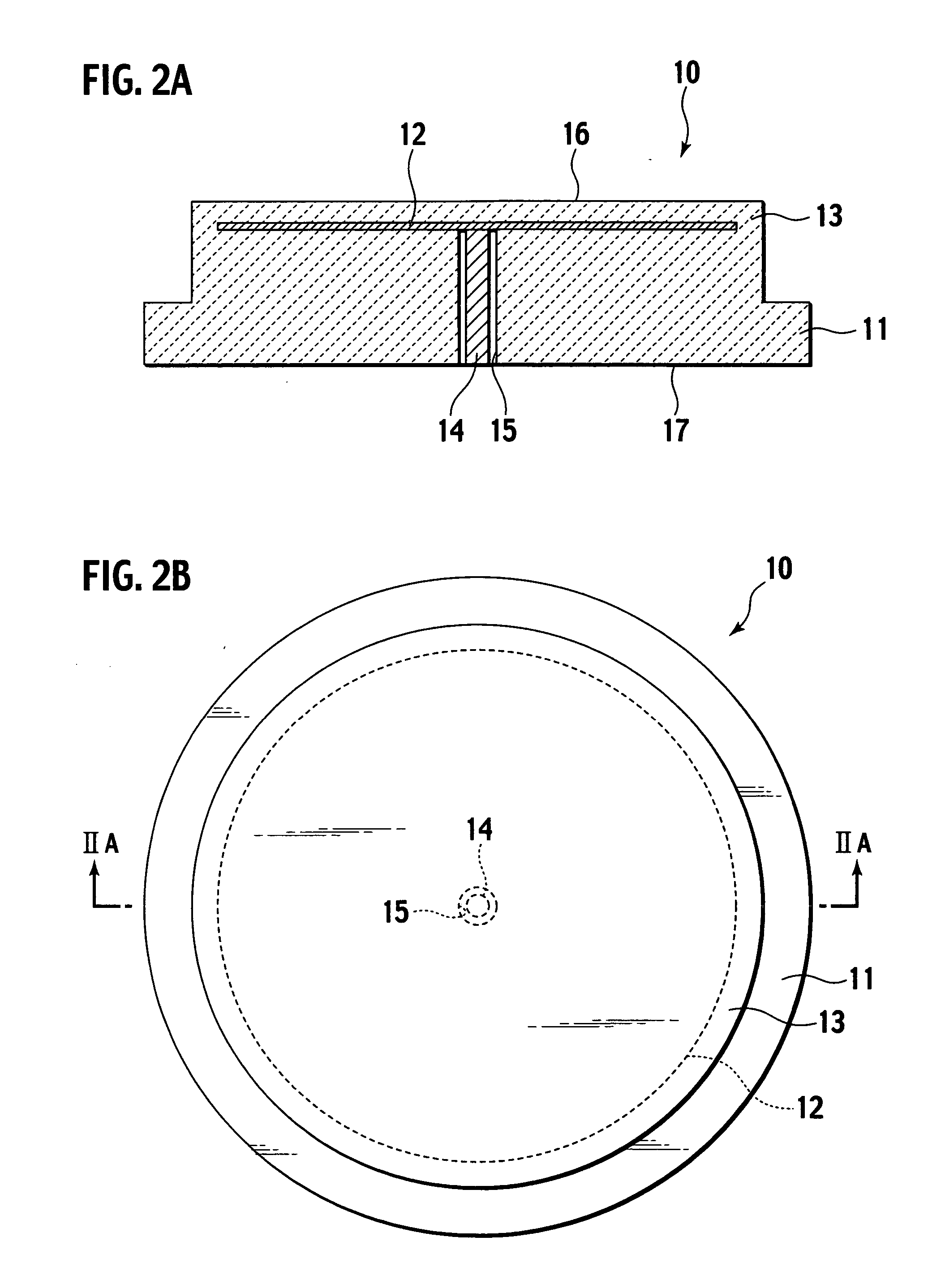Yttria sintered body, electrostatic chuck, and manufacturing method of yttria sintered body
a technology of electrostatic chuck and yttria sintered body, which is applied in the direction of manufacturing tools, mechanical equipment, natural mineral layered products, etc., can solve the problems of affecting the quality of yttria sintered body, etc., to achieve uniform distribution of chucking forces, improve bonding strength, and excellent mechanical strength
- Summary
- Abstract
- Description
- Claims
- Application Information
AI Technical Summary
Benefits of technology
Problems solved by technology
Method used
Image
Examples
examples
[0112] There will be detailed examples of the embodiments, while the invention is not limited thereto.
Examples of Yttria Sintered Body
[0113] Embodiment examples 1 to 4 and comparative examples 1 and 2
[0114] Description is now collectively made of embodiment examples 1 to 4 and comparative examples 1 and 2.
[0115] Embodiment examples 1 and 2, as well as comparative example 2, are examples of a yttria sintered body composed of yttria and silicon carbide, where powder of yttria and powder of silicon carbide were weighed and mixed for preparation of raw material powder, so that yttria and silicon carbide had their composition ratios shown in Table 1.
[0116] Embodiment examples 3 and 4 are examples of a yttria sintered body containing alumina, besides yttria and silicon carbide, where powder of yttria, powder of silicon carbide, and powder of alumina were weighed and mixed for preparation of raw material powder, so that yttria, silicon carbide, and alumina had their composition ratios...
embodiment example 5
[0131] There was manufactured an electrostatic chuck 10 of FIGS. 2A and 2B having a base body 11 made by a yttria sintered body.
[0132] First, yttria powder of an average particle size of 1 μm and silicon carbide powder of an average particle size of 0.5 μm were mixed, by composition ratios of 70% by volume of yttria and 30% by volume of silicon carbide, to prepare raw material powder. To the raw material powder, water, a dispersing agent, and polyvinyl alcohol (PVA) as a binder were added, and mixed together by a trommel to prepare a slurry. This slurry was atomized and dried by a spray dryer for preparation of granulated granules.
[0133] Granulated granules were filled in a molding die, where they were pressed in the direction of a single axis to form a compact. The compact was packed in a carbon sheath, and sintered by a hot pressing method in a nitrogen atmosphere at a sintering temperature of 1,900° C., to form a base body 11 of yttria sintered body.
[0134] Next, a print paste ...
embodiment example 6
[0139] There was manufactured an electrostatic chuck 30 of FIGS. 4A and 4B having a base body 31 made by an alumina sintered body.
[0140] Granulated granules prepared like the embodiment example 5 were filled in a molding die, where they were pressed in the direction of a single axis to form a compact. This compact was packed in a carbon sheath, and sintered by a hot pressing method in a nitrogen atmosphere at a sintering temperature of 1,600° C., to form a dielectric layer 13 of yttria sintered body containing silicon carbide.
[0141] Next, a print paste was prepared like the embodiment example 5, and an electrode 12 of a size of 290 mm diameter by 20 μm thickness was formed on the dielectric layer 13 of yttria sintered body by a screen printing method, and dried. Then, a perforated positioning jig or the like was used to determine a position for formation of a connecting member 38. Then, to the determined position for formation on the electrode 12, there was adhered, by using the p...
PUM
| Property | Measurement | Unit |
|---|---|---|
| volume resistivity | aaaaa | aaaaa |
| volume resistivity | aaaaa | aaaaa |
| particle size | aaaaa | aaaaa |
Abstract
Description
Claims
Application Information
 Login to View More
Login to View More - R&D
- Intellectual Property
- Life Sciences
- Materials
- Tech Scout
- Unparalleled Data Quality
- Higher Quality Content
- 60% Fewer Hallucinations
Browse by: Latest US Patents, China's latest patents, Technical Efficacy Thesaurus, Application Domain, Technology Topic, Popular Technical Reports.
© 2025 PatSnap. All rights reserved.Legal|Privacy policy|Modern Slavery Act Transparency Statement|Sitemap|About US| Contact US: help@patsnap.com



